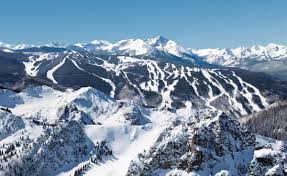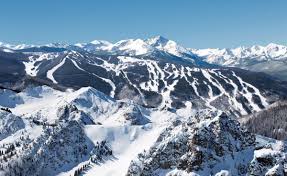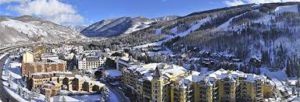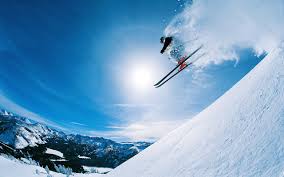The Death of the Ski Industry?

Analysis of the impact of climate change on the ski industry.
 The tourism industry is significantly impacted by climate change. Variability in weather patterns can lead to changes in the environment that directly impair the natural competitive advantages—pristine beaches, gushing waterfalls, and heavy snowfall—that make some locations such attractive tourist destinations. The impacts of climate change can be seen by analyzing the ski industry. In particular, Whistler Blackcomb Holdings Inc. (TSX: WB) (“Whistler Blackcomb,” “Whistler,” “WB,” or the “Company”), a Canadian ski resort, employed a number of steps to bolster its business model in the face of climate change, such as utilizing artificial snow, reducing its operating footprint, and becoming a year-round resort. However, the Company’s recently announced merger with Vail Resorts, Inc. (NYSE: MTN) (“Vail”), raises questions about the long-term viability of the business in the face of climate change threats. The success of the merger for WB will depend upon Vail’s ability to add other ski resorts in defensive locations.
The tourism industry is significantly impacted by climate change. Variability in weather patterns can lead to changes in the environment that directly impair the natural competitive advantages—pristine beaches, gushing waterfalls, and heavy snowfall—that make some locations such attractive tourist destinations. The impacts of climate change can be seen by analyzing the ski industry. In particular, Whistler Blackcomb Holdings Inc. (TSX: WB) (“Whistler Blackcomb,” “Whistler,” “WB,” or the “Company”), a Canadian ski resort, employed a number of steps to bolster its business model in the face of climate change, such as utilizing artificial snow, reducing its operating footprint, and becoming a year-round resort. However, the Company’s recently announced merger with Vail Resorts, Inc. (NYSE: MTN) (“Vail”), raises questions about the long-term viability of the business in the face of climate change threats. The success of the merger for WB will depend upon Vail’s ability to add other ski resorts in defensive locations.
Blackco mb Takes a Stand Against Climate Change
mb Takes a Stand Against Climate Change
WB is a year-round mountain resort that includes two adjacent and integrated mountains, Whistler Mountain and Blackcomb Mountain. WB is comprised of 200 marked runs, 8,000 plus acres of skiable terrain, 14 alpine bowls, and three glaciers.[i] The Company’s business model is directly at risk from the rising temperatures that result from global warming. For WB, unseasonably warm weather has two main effects: it may cause inadequate natural snowfall, leading to the use of artificial snow, which imposes additional costs on the business, or it could result in unsuitable skiing conditions, leading to a decrease in the number of days available during the season.[ii]
To protect against inadequate snowfall, WB invested heavily in snow making equipment. The resort now has 697 acres of snowmaking capacity due to its $26 million investment in a state-of-the-art snowmaking system and terrain improvements ahead of the 2010 Olympic Winter Games.[iii] In addition to investing in snowmaking equipment to protect against weather variability, the Company has attempted to diversify its revenue stream away from winter-related activities. Only 15% of WB’s 2014 revenue was generated during the summer months. In 2015 the Company unveiled a plan to invest $345 million in the construction of a 163,000-sq.-ft indoor water park called “Watershed,” in addition to further investments in snowmaking equipment.[iv] These investments may allow the Company to be a year-round resort destination, further protecting its position in the face of variable weather patterns caused by climate change.
Furthermore, in an effort to reduce its own contribution to global warming, WB adopted a zero waste, zero carbon, zero net emissions goal. To achieve its goal of generating a zero operating footprint the Company focuses on the 4 Rs regarding waste—reduce, reuse, recycle, and repurpose. WB has reduced its waste by 70% since 2010. As the food and beverage department generates 72% of waste, the Company has identified further opportunities for reducing food related waste by improving sorting, which will result in 25% more diversion.[v] Additionally, in 2010 WB began operations for a micro hydro renewable energy plant situated on the resort. The project allows WB to return to the energy grid an amount equal to the Company’s annual demand.

Is it Enough?
However, serious questions remain about whether these adaptations will be enough to protect the Company in the face of the direct threats from climate change. Studies have shown that although investments in snowmaking equipment are widespread among operators, even when operators invest in snowmaking, resort visitors are still very sensitive low natural snowfall during the winter season. Furthermore, skiers in low elevation areas are even more sensitive to a lack of natural snowfall. According to Falk and Vanat, “snowmaking investment has no impact on skier visits in low elevation ski areas.”[vi] Other studies have shown that ski operators will face higher energy costs due to rising electricity costs and decreasing long run ski visitor numbers due to lower overall snow depths.[vii] This environment of lower profitability may cause many ski operators in lower elevations to face financial strain.
Following the trends on industry consolidation, on October 17, 2016, Vail and Whistler Blackcomb announced the completion of the merger joining Whistler Blackcomb with Vail Resorts. The deal valued Whistler Blackcomb at $1.0 billion and shareholders received C$17.50 in cash and 0.097294 shares of Vail Resorts.[viii] Vail and Whistler’s ability to remain competitive will require the combined Company to expand the success of Whistler’s zero operating footprint campaign to other ski resorts on the Vail platform, thereby reducing Vail’s energy costs in a period of rising energy costs. Additionally, given skiers’ sensitivity to natural snowfall, Vail will need to continue to add additional ski resorts at higher elevations to remain competitive.
Word Count: 796 Words
[i] Whistler Blackcomb Holdings Inc. (TSX: WB), 2015 Annual Report. p. 2.
[ii] Whistler Blackcomb Holdings Inc. (TSX: WB), 2015 Annual Report. p. 17
[iii] Whistler Blackcomb Holdings Inc. (TSX: WB), 2015 Annual Report. p. 10
[iv] Macleans.ca. 2016. How snowless ski resorts are adapting to climate change – Macleans.ca. [ONLINE] Available at: http://www.macleans.ca/economy/business/how-snowless-ski-resorts-are-adapting-to-climate-change/. [Accessed 04 November 2016].
[v] Whistler Blackcomb. 2016. Environment | Whistler Blackcomb. [ONLINE] Available at: https://www.whistlerblackcomb.com/about-us/environment. [Accessed 04 November 2016].
[vi] Martin, F, 2016. Gains from investments in snowmaking facilities. Ecological Economics, 130, 339-349.
[vii] Damm, A, 2014. Does artificial snow production pay under future climate conditions? – A case study for a vulnerable ski area in Austria. Tourism management, 43, 8-21.
[viii] Vail Resorts and Whistler Blackcomb Complete Strategic Combination. 2016. Vail Resorts and Whistler Blackcomb Complete Strategic Combination – Yahoo Finance. [ONLINE] Available at: http://finance.yahoo.com/news/vail-resorts-whistler-blackcomb-complete-130000490.html. [Accessed 04 November 2016].
Vail Resorts, Inc., WHISTLER BLACKCOMB TRANSACTION OVERVIEW. August 8, 2016



Cool post Tiana! Climate change may very well be the end of the skiing industry as we know it. As snow levels decrease and expensive snow-making equipment becomes an industry standard, a lot of small players will be forced out of the market. Already, the number of ski areas in America has decreased from 546 to 470 since 1992 (https://insideclimatenews.org/news/23122015/climate-change-global-warming-imperils-winter-ski-industry-frets-el-nino).
As a skier, I’ve noticed a great deal of variability in snow levels from season to season during the past decade. I can’t imagine that managing that variability comes cheap to resort operators.
Sadly, WB’s efforts to adopt environmentally friendly practices and reduce emissions is just a drop in the bucket. Climate change can only be addressed through a concerted effort.
WB’s diversification into non-winter related entertainment activities says a great deal about the company’s view on the future. They’re right to hedge: ski cannot survive in a world without natural snow – snowmakers are expensive and turn customers off. It’s paradoxical, but the prospect of a world without natural snow gives me the chills.
Great point about the variability of ski resorts. I have seen that first hand in the Alps. This issue is affecting ski resorts globally: http://www.eea.europa.eu/signals/signals-2010/alps .
I also agree that the environmentally friendly practices may not be enough to reduce emissions. I can see the benefits of hedging the risks by merging with other resorts, but I don’t believe that it is a step in the right direction as it might artificially disguise the real problems that the industry is facing, and delay the search for long-term solutions to the problems we are facing.
What I would look at is technological innovation. http://ski.curbed.com/2016/5/11/11659314/summer-skiing-tahoe-woodward-boreal-snowfactory .It is probably not enough for ski resorts to mitigate for climate change. What they should be adapt in other ways, by using their investment to invest in R&D rather than merge with other ski resorts.
I am not a skier, but I come from a country with some of the most amazing ski locations worldwide and where the ski business is crucial to our economy, and the fact that this sector is in serious danger is a topic that matters to me personally.
To even make it even a more personal interest, a close friend of mine owns a ski resort business and is facing serious financial losses.
I found your article extremely interesting and I agree with your analysis that the impact of climate change will be so substantial that the only solution is to develop a comprehensive action plan to address it: invest in snow-making technologies, add additional ski resorts at higher elevations, diversify the business with non-snow related activities, improve efficiency and reduce costs with sustainable initiatives (e.g. reduce wastes). It seems evident to me as you also pointed out that all this actions can be undertaken only buy the main players in the industry, and that consolidation will be the only solution for smaller players to survive. A few big players will take the whole business, but hopefully thanks to increased investment capabilities they will be able to keep it alive.
Really great post! For one of my consulting projects, our team stayed at a ski resort during the summer. Like WB, this resort heavily marketed its non-ski related services like its conference centers / hotel / hiking on the mountain around the summer months to keep business afloat. It actually partnered with our client to be the client’s official hotel for visiting business people. I think this will become a pattern across the industry as climate changes. Another thought is if the number of indoor ski parks will be on the rise? When I was in Dubai, I visited the Ski Dubai which is an indoor ski park inside of a mall in the desert. Perhaps more areas of the world will resort to indoor skiing in the future.
It will really impact our lives if we can’t ski any more! The skiing resorts that depend heavily on the natural environment are the 1st wave of companies that will be impacted by the Climate change. The skiing resort start to take some measures to combat the climate change but it seems really hard for the skiing resort to solve this issue sololy. And of course the artificial snow are way worse than the natural snow. Thank you for sharing!
I agree that the ski resort industry is one of the industries that is going to suffer in the short term. Artificial snow does not match natural snow in terms of quality and experience (experience skiers usually enjoy more skiing outside the tracks within forests than in crowded regular tracks) and therefore, I think that putting additional artificial snow facilities is not a solution in the long term. In addition, no matter how advanced these artificial snow solutions are, certain weather conditions will have to be met to actually produce the snow.
Therefore, I believe that the future of ski resorts hinges on identifying the limitations and diversifying the risk of not having snow through the development of parallel activities such as sightseeing, trekking, hiking, mountain biking, animal reserves, etc. It is true that these activities are usually not as profitable as high-end exclusive skiing but at the end of the day, it is not better something than nothing?
Great post, Tiana!
I, too, am skeptical that environmentally friendly goals and policies at these resorts will be enough to affect real change. Unfortunately there are a lot of additional consequences of ski-related tourism that have much bigger impacts on climate change than anything the resort itself can influence. For example, many of these ski resorts are destinations; avid skiers will travel from far away either by plane or by car to reach the mountains. These cross-country flights and multi-hour drives have a very high carbon footprint. I don’t see a way that ski resorts can get around this, other than discourage people from coming to their mountain which would be counter-productive to their business. Perhaps ski resorts can do more to attract local visitors to minimize the travel requirements, but this will only have so much impact.
I understand the mentality of man-made snow seeming less appealing, but it seems to be the best alternative. Many of these resorts have built up great ski-towns with hotels, homes, restaurants, shops, etc. that all contribute to the overall experience in a positive way. I think a lot of people look forward to ski vacations for these other activities in addition to the snow, and will likely still choose a well-established mountain resort town over an indoor ski experience even if the snow isn’t quite as good.
The changing climate also may provide new opportunities for mountains that are located in areas that once were too cold or inaccessible; existing ski resorts like WB could maybe look into these opportunities for future expansion and hedging.
Such an interesting post, and clearly a topic of dire concern for passionate skiers! I appreciate your analysis of how Whistler is managing their long-term risks here, but also wonder if there are some short- to medium-term opportunities for the company. WB is thousands of miles north of many popular ski resorts (i.e. Colorado and Utah) and its summit elevation is only moderately lower. While I’m not well-versed in the meteorological patterns of the Rockies, I could imagine that WB may experience climate change at a slower or at least delayed rate compared to the more southern resorts, which represents an opportunity to draw skiers north. I wonder if the deal with Vail was also an opportunity for Vail to hedge its climate risk, too. Additionally, I wonder if there are opportunities for WB to build support in the skiing community to combat climate change, drawing on grass roots support to advocate for aggressive policies to protect their business (and the skiing lifestyle).
Love the post! As an avid skier, I felt compelled to comment as well.
As others have said, man-made snow is just no comparison. I think the only way for the ski industry to survive is to look into new locations with greater snowfall. However, like “A Scuba Diver” mentioned, ski resorts in more remote regions will only perpetuate climate change via the costly vehicles used to get to the resort. Only a drop in the bucket perhaps, but failing to address this fact will make the resort look hypocritical, at best.
Consolidation of resorts is inevitable, most likely across continents, as this will be the only way to battle local droughts in particular regions and still keep a relatively steady cash flow. As climate change gets worse, the only way to go will be up to find snow. I hypothesize that the companies will have to center innovation around the ability to “move” a resort from one mountain to the next at the lowest cost possible as well as the ability to have guests comfortably travel to and ski at high altitudes for long periods of time.
Tiana,
This was a great read! I think that mainstream media often only covers the impact of climate change from the perspective of ‘traditional’ industries such as manufacturing, energy and resource-intensive industries. However, as your post aptly points out, climate change is an all-encompassing issue that will not only affect traditional business sectors, but also sports and recreational activities. I believe that showing how climate change can impact the ‘everyday individual’ is incredibly powerful as it makes the topic relatable to more people. To that end, there are a number of initiatives aimed at promoting awareness about climate change through winter sports and professional athletes. I encourage you to check out the “Protect our Winters” (http://protectourwinters.org/our-work/) and “Sport4Climate” (https://vimeo.com/99650447) initiatives. These initiatives attempt to mobilize professional athletes and outdoor enthusiasts as ‘influencers’ to promote climate change awareness and action. These initiatives believe that promoting climate change awareness through these ‘influencers’ is highly effective as these “influencers” are able to tap into a distinct/wider network – a network that governments and social impact groups are unable to access.
Aside from being tremendously depressing, this is a wonderful post.
I wonder how this will play out in coming years. If climate changes forces costs to rise at low elevation resorts, then this may force a spike in tourism at resorts located in higher elevations. A common concern for climate change is that it will force consolidation of populations inland–but few people consider the effects that it will have on tourism.
Furthermore, this may indicate that there will be an increased market for snow-making machines and a need for advances in snow-making technology, given the considerable difference in quality between natural and artificial snow.
Great post, Tiana! You clearly put a lot of effort into researching this and reading the Annual Report, which requires more stamina than I’ll ever have.
I didn’t realize how much snow-making equipment the ski resorts use– that number is enormous. One of the questions I would have is around how much of a risk there is, if any, of the volume of long-term skiiers dropping because of climate change (and lower natural snow + more fake snow). To some extent, I wonder if skiiers will really just go skiing less or they will just have to adapt to the new normal because they have no choice. Maybe the industry should focus on marketing and convincing their avid fans to stick with it as much as they have before. This doesn’t solve the problem of the waste they create and the encroaching problem of global warming, nor the fact that fake snow itself causes more climate change issues also, but it might at least buy the industry some time (but for better or worse– negative externalities could be that the problem is kicked down the road more).
This was a really interesting post; as an avid skier this is something I have just have not thought about previously, but was very intrigued to learn more about. One question I have is how much more costly and in what magnitude these new ski runs at higher altitudes will cost compared to previous runs created, and if this makes it less feasible to create these runs going forward? I am making the assumption that these runs cost more from a development perspective since gondolas take more energy the higher they go, and since they will likely need to build additional equipment at these levels as well. I also would have to assume these runs would be more costly from the perspective that they would likely consist of more rocky terrain or they would have been the first areas chosen to develop, so I also wonder if these runs will be lessor in quality in your opinion? Awesome post, very thought provoking.